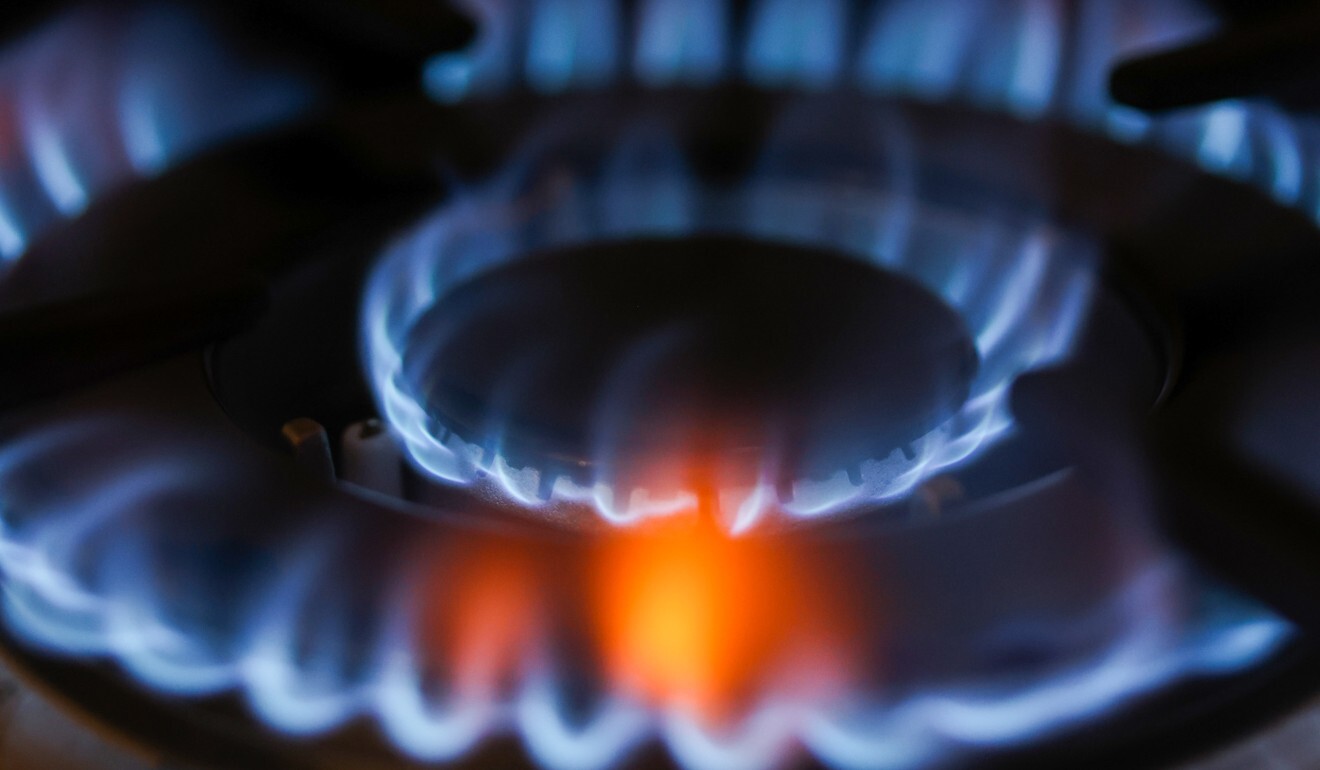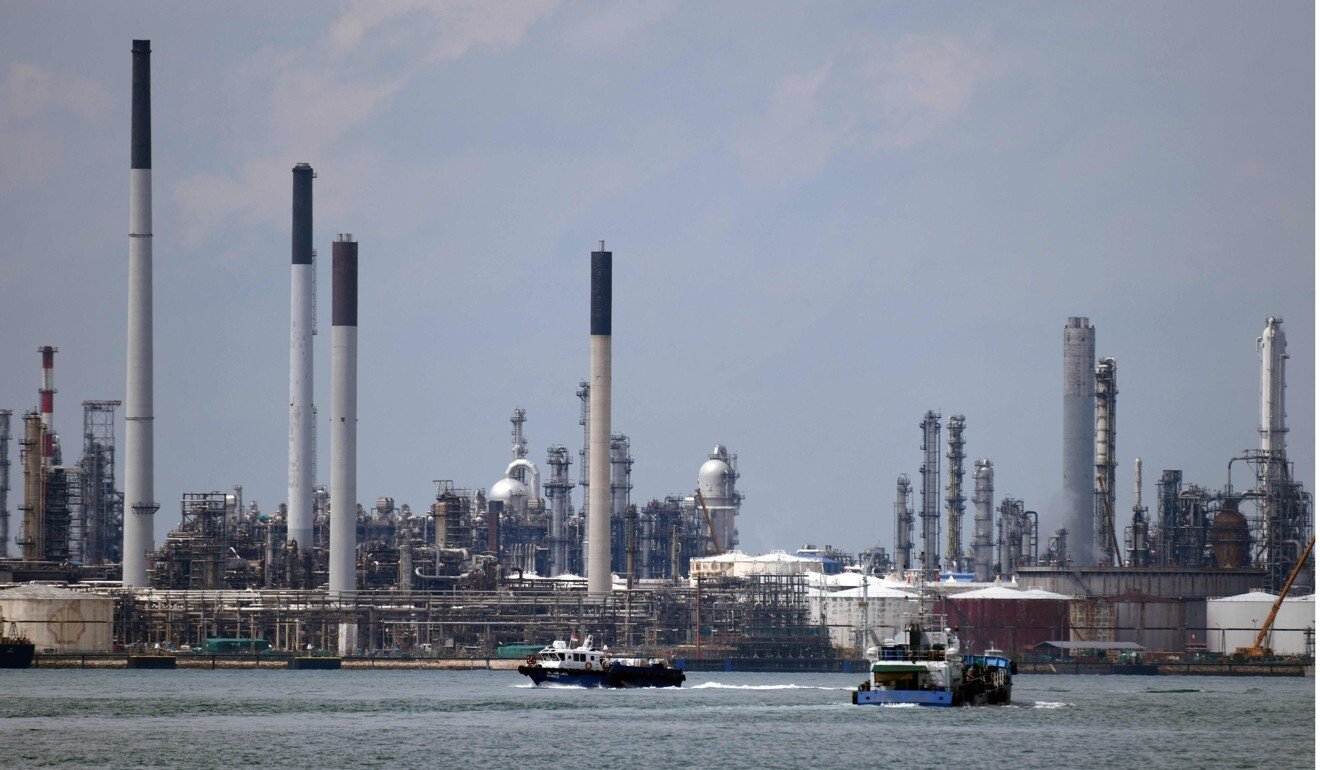
Asia braces for fallout as China and Europe face energy crunch
- Businesses and consumers are grappling with the higher costs of utilities, petrol, and raw materials
- Coal is being mooted as a short-term option, but analysts say falling back on it will threaten the region’s climate goals
Even though electricity bills only account for a fraction of costs for the firm, which supplies parts to electronics giants Samsung and LG, Oh has already felt the effects of skyrocketing oil prices. The price of transport and raw materials such as plastics – which are derived from oil, gas, or coal – have risen by 5 to 10 per cent.
“I’m quite worried about rising costs of materials,” he told This Week in Asia. “We plan to cut down on other costs and enhance productivity to cope with rising oil costs.”
Crude oil prices have surged dramatically in recent weeks, partly fuelled by a boom in economic activity as countries bounce back from the pandemic. Brent oil – the international benchmark – hit US$80 a barrel on Tuesday, a three-year high.
A reduction in drilling activity by shale producers and supply disruptions have driven up prices of natural gas, which is used to heat homes during winter and power factories. With a concurrent shortage of coal, all signs are pointing to a looming energy crisis.
Asia will not be spared the fallout. Howie Lee, an economist at Singapore’s OCBC Bank, said the energy crunch was “set to have a rippling effect across the world, as countries grapple with higher input costs”, and noted that most countries in the region were dependent on imports of oil, gas, and other refined products.

Petrol and utility price hike
Just like Oh, others in South Korea will soon feel the pinch. Korea Electric Power Corporation (Kepco), the country’s largest electric utility, last week said it would raise prices for the first time in almost eight years, with power bills going up as much as 1,050 won (89 US cents) per month for a family of four starting this month.
The move, Kepco said, was to cope with the surging price of liquefied natural gas, or LNG. South Korea relied on energy imports for 93.5 per cent of its needs in 2019, with LNG making up 17.7 per cent of its energy mix, while oil and coal accounted for 38.7 per cent and 27.1 per cent respectively. Nuclear made up 10.3 per cent, while water and renewables accounted for the remaining 6.2.
Vice economy and finance minister Lee Eok-won on Wednesday said some public utility charges – except for already-decided increases such as those for electricity bills and rates for railways and roads – would remain the same in the fourth quarter to rein in inflationary pressure.
“Supply bottlenecks and disturbances and increases in global oil prices are being extended, as price hikes in agricultural and petroleum products in this country are continuing longer than expected,” the Korean minister said. “We will [make the] utmost effort to curb expectations for inflation and improve distribution networks and pricing structures.”
South Korea’s central bank added that international oil prices were expected to go down next year, though they would remain higher than before the pandemic as oil production increases were likely to fall short of global growth in demand.
Britain puts army on standby as fuel pumps run dry
Oil and gas companies, in response to queries, said they would not speculate on future petrol prices but an ExxonMobil spokesperson commented that prices at the pump are influenced by the price of crude and other factors including fuel production, inventory levels and storage and transportation costs.
Song Seng Wun, an economist at CIMB Private Banking, expects petrol and utility prices in the region to continue rising. Singapore from July to September raised its electricity tariff by some 3.8 per cent – meaning an average increase of S$3 a month for households – citing the higher cost of fuel for producing electricity.
The city state adjusts its electricity tariffs quarterly to reflect changes in the cost of fuel and power generation.

Singapore’s Energy Market Authority told This Week in Asia that the country would be affected by the global energy market as it imports almost all of its energy, but the impact of short-term fuel price hikes on electricity tariffs is moderated as power generation companies buy natural gas under multi-year supply contracts.
“However, persistently high fuel prices will lead to higher electricity prices eventually,” the government agency said in an email response.
Lee of OCBC noted that utility prices for most parts of Asia remained heavily regulated and subsidised, meaning the effect of rising oil and natural gas prices were largely felt at the wholesale level and were not passed down to consumers.
Even so, Song suggested the effects of this global crunch would not be as bad as a few decades ago, when an increase in fossil fuel prices would have had a substantial negative effect on economic growth.
“Things have changed. Energy use has become more efficient,” he said. “The direct impact from higher energy costs is significantly less this time around.”

What would cause a greater ripple effect on Southeast Asian countries, Song said, would be if the energy crisis crippled their major trading partners, such as China.
China is experiencing its worst power shortages in a decade – affecting the residential as well as industrial sectors – and Beijing has ordered energy companies to secure fuel at all costs to ensure basic livelihoods and keep supply chains stable.
The central government’s order has sparked predictions that energy markets are set to see more volatility amid a bidding war for supplies, with European governments and consumers also dealing with high gas and electricity prices this winter, Bloomberg reported last week.
But for Asian analysts, the fallout from moves by China’s factories to implement energy-saving measures, either by suspending operations or lowering production capacity, is more concerning.
Smaller firms have turned to diesel generators. A disruption to output would impact industries such as aluminium and steel, with a knock-on effect on Southeast Asian countries that depend on Chinese materials for their engineering and construction sectors.
“China’s industrial shutdown, in my opinion, is a more serious issue than Evergrande,” said Lee, referring to the embattled property developer. “There could be spillover effects to the rest of Asia in terms of slowing growth and higher inflation due to supply bottlenecks.”
It will be a big mistake for China, India, and Southeast Asia to increase the use of polluting fuels, especially coal
But the Vietnamese trade and industry ministry also acknowledged that demand for imported materials from manufacturers had dropped due to Covid-19 lockdowns in the country forcing them to suspend operations, Reuters reported.
Impact on climate goals
Another concern is whether this energy crunch will compromise global efforts to curb carbon dioxide emissions, as countries become more reluctant to give up the usage of coal.
In China’s case, there have been suggestions for the government to either raise electricity prices or encourage coal mines to boost output. But the latter could be costly, said Vinod Thomas, a former senior vice-president at the World Bank.
“China is tempted to ramp up coal production, but that will unequivocally lead to more emissions and higher temperatures, exacerbating floods and hurricanes,” he said, noting that fossil fuels were causally linked to more extreme weather. “It will be a big mistake for China, India, and Southeast Asia to increase the use of polluting fuels, especially coal.”

Lee from OCBC said some Asian countries could likely fall back to using coal as a short-term solution, even when it meant ditching their emissions targets.
Thomas added that while the proximate reasons for the sharp spike in oil prices were Opec’s cut in production and climate-related disasters affecting oil infrastructure in the United States, the roots of the problem were deeper.
Thomas, who is also visiting professor at the Lee Kuan Yew School of Public Policy in Singapore, used an analogy to describe the situation: “Diabetes can produce pangs of hunger, but if you meet that need by resorting to the easiest available sweets, blood sugar levels will rise even higher.”
With the need for energy set to grow as more countries emerged from the pandemic, he said it was imperative that the demand be met through non-polluting means. “The world is already at a tipping point for climate catastrophes and any expansion of fossil fuels will take us to a point of no return.”
Southeast Asian countries should see this situation as an imperative to opt for cleaner sources of energy, and there have been signs of this happening, said Nitin Apte, the chief executive of renewable energy company Vena Energy.
UK fuel crisis: why is it happening and when could it end?
Countries in the region have been proactive in setting clean generation targets and policies. Indonesia, for example, has set a target of 23 per cent renewable generation for its electricity mix by 2023, while Manila is aiming to hit 37 per cent in about a decade.
More investments in innovative technologies, such as floating solar and offshore wind farms, had also been recorded, he said. Vena Energy has multiple solar and wind projects in Indonesia, Thailand, and the Philippines.
Singapore is also shifting towards greener energy sources, the country’s energy authority said, while using natural gas as a key fuel source. The city state earlier this year built the world’s largest inland floating solar farm, the size of 45 football fields, as part of efforts to quadruple its solar energy production by 2025.
Experts have been calling on regional governments to attract investments to upgrade their existing transmission networks and facilitate the development of the renewable energy sector, which would mean retraining workers currently in the fossil fuel industry.
There have also been suggestions to consider nuclear power, although there continue to be safety concerns over nuclear plants, especially after Japan’s Fukushima disaster.
Vinod, the former World Bank vice-president, concurred that policymakers should aim to increase renewable energy from here on out.
“There is no question that the global economy is in the grips of a super wicked problem,” he said. “But ramping up dirty fuels to meet the energy crunch will be self-defeating in the Asia Pacific, a region that bears the brunt of climate catastrophes.”
Additional reporting by Park Chan-kyong

